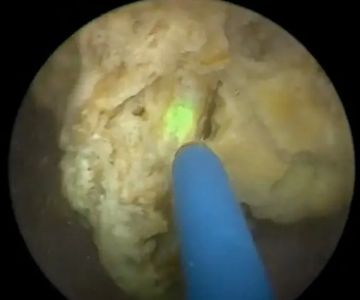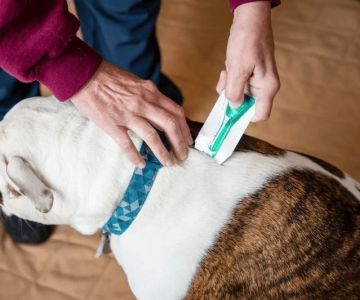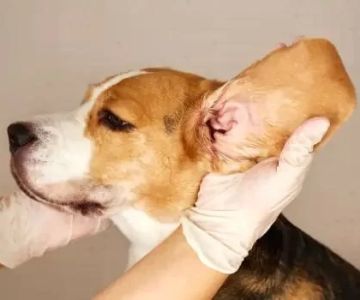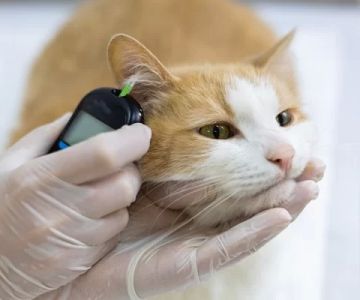How to Treat Common Dog Skin Conditions: A Complete Guide for Pet Owners
- 1. Understanding Common Dog Skin Conditions
- 2. How to Identify Dog Skin Conditions
- 3. Treating Common Dog Skin Conditions at Home
- 4. When to See a Veterinarian for Dog Skin Conditions
- 5. Preventing Future Dog Skin Conditions
- 6. Case Study: Treating a Dog’s Skin Issues Successfully
1. Understanding Common Dog Skin Conditions
Just like humans, dogs are prone to a variety of skin conditions that can cause them discomfort. Common dog skin conditions include flea dermatitis, hot spots, dry skin, mange, and allergies. While some of these conditions are relatively mild and can be treated at home, others may require veterinary intervention. Understanding the cause of your dog’s skin condition is the first step in effectively treating it.
Flea infestations are one of the most common causes of skin irritation in dogs. Flea bites can lead to itching, redness, and inflamed areas. Hot spots, which are painful, infected areas of the skin, can develop rapidly in dogs with thick coats or excessive moisture. Dry skin can also result from environmental factors such as cold weather, low humidity, or frequent bathing. Understanding the different types of conditions your dog may face can help you determine the right course of action.
2. How to Identify Dog Skin Conditions
Identifying a dog’s skin condition requires careful observation. Common symptoms of skin issues include itching, hair loss, redness, scabbing, and the presence of sores or rashes. If you notice your dog scratching or licking excessively, this could be a sign of a skin problem. Other signs to look out for include foul odors, swelling, and the development of scabs or crusty patches on the skin.
One of the most prevalent skin conditions is flea allergy dermatitis. If your dog is scratching excessively and has red, irritated skin, fleas might be the culprit. Another common issue is mange, which is caused by parasitic mites that burrow into the skin. This condition typically results in hair loss, itching, and lesions on the skin. If your dog’s skin condition seems to worsen or doesn’t improve after treatment, it may be time to consult with a veterinarian.
3. Treating Common Dog Skin Conditions at Home
While some skin conditions in dogs can be treated at home, it’s important to be cautious and not self-diagnose. Here are some common treatments that may help alleviate your dog’s discomfort:
1. Flea Treatments
Fleas are one of the most common causes of itching and discomfort for dogs. Over-the-counter flea treatments, such as topical medications, flea collars, and oral medications, can help control flea populations. Additionally, cleaning your home with flea sprays and regularly washing your dog’s bedding can reduce the risk of future infestations.

VCA Arboretum View Animal Hospital, 2551 Warrenville Rd, Downers Grove, IL 60515, USA
See Details2. Hot Spot Treatment
Hot spots can be extremely painful for dogs, and they often require immediate treatment. You can treat hot spots at home by cleaning the affected area with an antiseptic solution and applying an over-the-counter antibiotic ointment. However, be sure to prevent your dog from licking the area by using an Elizabethan collar or protective wear.
3. Moisturizing Dry Skin
Dry skin in dogs can be treated by using moisturizing shampoos designed specifically for dogs. Bathing your dog with lukewarm water and a hypoallergenic shampoo can help soothe dry skin. You can also consider adding fish oil or omega-3 fatty acids to your dog’s diet, which can help improve skin health from the inside out.
4. When to See a Veterinarian for Dog Skin Conditions
While minor skin issues can often be managed at home, some conditions require professional veterinary care. If your dog’s symptoms persist or worsen despite home treatment, or if you notice severe signs such as bleeding, swelling, or an open wound, it’s essential to consult a veterinarian. Additionally, if your dog’s skin condition is caused by a serious underlying health issue such as an autoimmune disorder or hormonal imbalance, veterinary treatment is necessary.
A veterinarian can provide a proper diagnosis and recommend a treatment plan tailored to your dog’s specific condition. They may perform tests such as skin scrapings or blood work to identify the cause of the skin problem, which can help rule out potential infections or allergies.
5. Preventing Future Dog Skin Conditions
Preventing skin conditions in dogs often involves regular grooming, a balanced diet, and maintaining a clean environment. Brushing your dog regularly helps remove dirt, dead skin, and parasites that could contribute to skin problems. Additionally, feeding your dog a high-quality diet with essential nutrients like omega-3 fatty acids can promote healthy skin.
Regular flea prevention and keeping your dog’s environment clean and free from parasites are also essential steps in maintaining skin health. If your dog spends time outdoors, make sure to check them for ticks or fleas after each outing. Keeping your dog’s coat healthy and free from tangles can also prevent skin issues related to excessive moisture and friction.
6. Case Study: Treating a Dog’s Skin Issues Successfully
One of our clients, a Labrador named Max, came to us with severe itching and hair loss. After conducting tests, we discovered that Max had flea allergy dermatitis. With a combination of flea treatments, medicated baths, and a special diet, Max’s symptoms were greatly alleviated. His owner was also advised on how to prevent future flare-ups by using preventive flea medications and keeping the home environment clean.
Max’s case highlights the importance of identifying the right cause of a dog’s skin issue. Early intervention and appropriate treatment can prevent further complications and improve a dog’s quality of life. If you’re struggling with your dog’s skin condition, don’t hesitate to seek professional help.
For more personalized care and advice, visit Hidden Brook Veterinary and speak with one of our experienced professionals.










